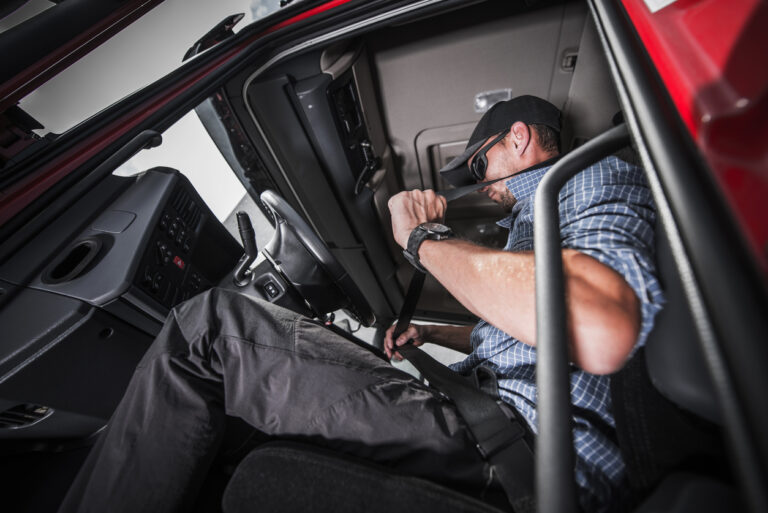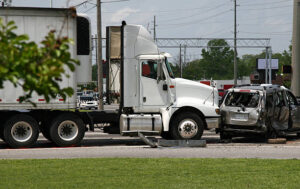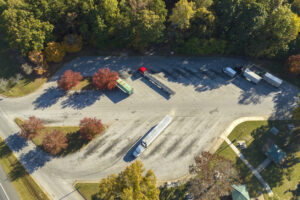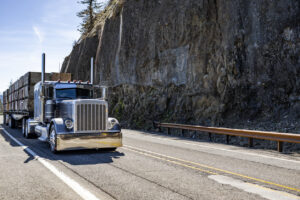WASHINGTON — The Federal Motor Carriers Association (FMCSA) is placing an even greater emphasis on the importance of commercial motor vehicle (CMV) drivers using seat belts.
“Existing data on the usage of safety belts and perceptions related to road safety do not capture the diversity of different types of commercial motor vehicle drivers in a post coronavirus disease 2019 national emergency landscape,” the FMCSA stated in a Department of Transportation Federal Register document dated June 13. “Understanding safety belt usage and perceptions of road safety among CMV drivers will assist FMCSA in gauging emerging trends among this cohort and will inform future messaging and communication efforts targeting CMV drivers.”
Earlier this year, the state of New York launched a new initiative to help safety efforts on the highway. An announcement was made June 6 that Together for Safer Roads (TSR), a leading global NGO focused on building cross-sector partnerships to improve fleet trucking safety, announces the publication of “Seat Belt Safety Standard Operating Procedures: How to create and maintain a culture of safety by promoting seat belt safety procedures.”
This new guide marks significant progress in establishing seat belt safety utilization standards as part of TSR’s Fleet Trucking Global Safety Standards Initiative.
The initiative, launched during the 2023 UN Global Road Safety Week, aims to establish operator-focused guidelines and best practices for effective implementation of fundamental safety tools and technologies, including telematics, automatic braking, airbags, side view mirrors and seatbelts. The first phase has been dedicated to developing “Gold Star” Standard Operating Procedures (SOPs) aimed at increasing driver seat belt utilization rates for fleets.
According to its press release, extensive research and stakeholder engagement, TSR identified a critical need for detailed SOPs that address both human behavior and specific seat belt hardware and technology. The new handbook, based on insights from fleet managers, drivers, and public and private sector leaders, highlights the importance of consistent seat belt use and offers practical guidance to enhance safety measures.
“Today marks a significant milestone in our mission to improve global fleet trucking safety, said Peter Goldwasser, executive director of Together for Safer Roads. “The SOPs outlined in our guide represent a comprehensive framework for promoting and supporting seat belt usage within organizations.”
Key aspects of the SOPs include:
• Training for Seat Belt Compliance: Building a foundation of knowledge and cultivating a culture of safety through comprehensive training initiatives. The SOPs stress the importance of integrating seat belt safety goals into organizational and operational practices. This includes incorporating seat belt usage into driver performance evaluations and utilizing data analytics to measure and enhance compliance.
• Seat Belt Software and Hardware Selection: Adopting the most reliable and effective technological solutions to bolster seat belt compliance and monitoring.
• Purchasing and Evaluating Vehicle Seat Belt Safety Systems: Ensuring that the procurement of vehicles and their safety equipment is guided by informed, safety-focused decisions. This involves establishing clear criteria for seat belt safety features and assessing the safety records and seat belt technology of potential vehicle models to maintain compliance with seat belt safety regulations.
• Seat Belt Utilization Enforcement: Creating mechanisms for compliance while ensuring accountability and timely corrective actions.
• Communication for Seat Belt Safety Awareness: Establishing clear channels and protocols for disseminating safety information, collecting feedback, and fostering dialogue. To make the necessity of seat belt usage more relatable and impactful, the SOP incorporates interactive training methods and anecdotal storytelling to educate drivers about the importance of seat belt safety.
• Documentation of Seat Belt Safety Compliance: Ensuring meticulous record-keeping, accessibility and regular updates to all seat belt safety-related documents.The SOPs emphasize the importance of measurement and evaluation (M&E) in ensuring the effectiveness, efficiency, and impact of seat belt safety initiatives. They outline the role of M&E in accountability, performance improvement, resource allocation, learning, evidence-based decision-making, impact assessment, transparency, risk management, efficiency and stakeholder engagement.
Within each section, practices are categorized as currently existing practices, industry best practices and easy to implement takeaways, providing fleet leaders a range of tools to implement in their own management practices.
The initiative’s development and subsequent testing are being conducted in collaboration with leading fleet partners, including AB InBev, Republic Services, The City of New York Department of Citywide Administrative Services (DCAS), PepsiCo and Interstate Waste Services. These partners emphasize the collective responsibility of organizations to contribute to long-term improvements in global fleet trucking safety.
“As a major user of roads worldwide, improving the safety of our vehicles and their operation not only benefits us but also enhances road safety for everyone,” said Andres Peñate, global vice president for corporate affairs at Ab-InBev. “We’re excited to team up with TSR to set better technical standards on the proper use of seatbelts. This important work demonstrates the positive change industry collaboration can have on our communities.”
“As the operator of one of the largest independently-owned fleets in the US, and a network of drivers across the globe, maintaining driver safety, health and wellbeing is essential,” said Daniel McGuigan, EHS director at PepsiCo. “At PepsiCo we’re proud of this important collaboration and look forward to continuing to work to advance seat belt usage and best practices.”
In 1996, in an open letter to Praxair professional drivers was received by the FMCSA by line driver Ed Corely. Despite the passage of time, the message Corley wrote is timeless when it comes to the importance of seatbelt use among CMV drivers. The title of the letter was, “Just Wear It, There Are No Excuses.” The following are excerpts from Corely’s letter.
“A local paper reported Sunday that a 19 year old was killed when he was ejected from a car his friend was driving,” Corely said. “On Saturday night, the driver apparently lost control of the car, crossed a ditch, and stopped in a neighbor’s yard. The paper stated the boy would have been starting college the next week and was not wearing a seatbelt before he was killed.
“A Praxair professional driver was killed when the truck he was driving left the road and overturned. He was not wearing his seatbelt! Another Praxair driver was thrown through the windshield when the truck he was driving left the road. He was seriously injured. He was also not wearing his seatbelt.
“A few years ago, the first legislation requiring seat belts was enacted. I heard someone protesting the mandatory seatbelt laws saying the law was a violation of his individual rights. Being a liberal-minded thinker in those days, my first impression was to agree. Then, the more I thought about it and examined my feelings about the law, I realized how sad it was that legislation is needed to protect us from ourselves. Think about it. The mandatory seatbelt laws and Praxair policies requiring the wearing of seatbelts are all about protecting us and saving lives.
“What is your excuse for not wearing your seatbelt? I hope your answer is, ‘I don’t have an excuse. I wear it all the time.’ If you don’t wear your seatbelt, is it really the smart thing to do.
“Could you live with yourself if your child or grandchild were killed in a car accident when not wearing a seatbelt because of the example you set? I don’t think so. If you are in a serious accident, I hope we don’t have to say, ‘If only he/she had used his/her seatbelt.’”
The FMSCA is requesting that commercial drivers help update the statistics by providing public comments through August 12.
To submit a comment online, click here. If submitting comments by mail or hand delivery, submit them in an unbound format, no larger than 8.5×11 inches, suitable for copying and electronic filing. Comments received after the comment closing date will be included in the docket and will be considered to the extent practicable.









I had a truck wreck 3 years ago fell asleep at the wheel from driving excessive hrs. I was traveling at speeds 72 mph (WITHOUT) a seatbelt on and I’m alive and back driving! Broke my leg in 2 places and my hip also head lasceration. They troopers and doctors said that if I’d of been wearing a seatbelt I would’ve DIED!!! I was back in a truck 3 months later and still wasn’t recovered yet! So???? Hmm 🤔 REALLY
Where is the data supporting the FMSA findings that wearing a seatbelt in a COMMERCIAL VEHICLE saves lives?? NOT A CAR!! No more stories about car driver’s having fatalities. Commercial drivers are not that stupid, wearing a seatbelt and airbags can cause more damage. Would this be ANOTHER stupid law to write more tickets to make money. Again, show us the actual data that supports your theory in Heavy Duty Commercial vehicles..
All this initiative is for is spending tax dollars, providing work for a bloated federal bureaucracy, and a waste of energy. Some drivers will always wear them properly, Some will wear them improperly, and some folks like the previous commenter will never wear one except at a weigh station. What business is it of the United Nations? This is nothing more than more regulations and control over the freedom of choice.
I wear mine always. My choice. I’ve seen the statistics of survivorbility in a crash and will take my chances in my seat, rather than being tossed around like a rag doll inside my truck. I prefer not being crushed in a door frame, or flying through the windshield an being rolled over by a vehicle. I know that when your number is up, it’s up. I just don’t want to be fingering the calculator of life like the previous commentator did.
so if we looked at the rate of “ping-pong ” injuries,ejection of and through the vehicle, loss of momentary control, we see a large reduction in injuries,mortality rates and damages just by seat belt usage.
75% to 25% survival rate.
Driver for 25 yrs in so California. I deliver heavy construction Eq all over Southern California. My first back surgery was 10yrs into my career and the 2nd I avoided by pulling myself out of the truck for 5months. I believe 1/3 of this is genetic related, 1/3 is the drivers seat and seatbelt “locking” me into the seat, and 1/3 is the road conditions!!
“If you can drive a boat, you can drive the freeways of Southern California.”
Having stated this, you cannot have a “blanket” policy requiring all drivers to wear seatbelts.
I know this is odd to understand for all writers and editors who write articles from years of experience WRITING!
At times it is unsafe to wear a seatbelt. Yes, most of the time all drivers will and do wear seat belts but understand.. for safety of your truck and people around you, sometimes, have to take your seatbelt off.
Point of this comment is; “we give authority to those who have never done the job the authorization to implement policies and laws of how the job gets done.